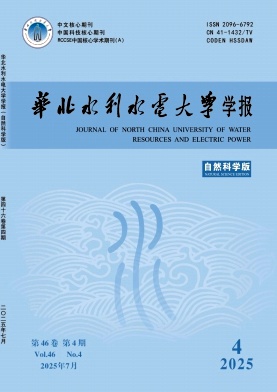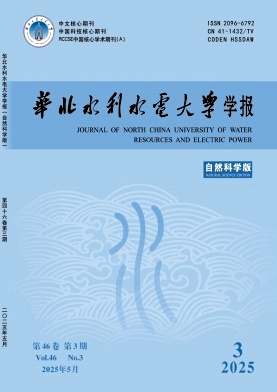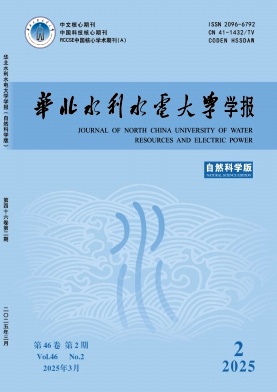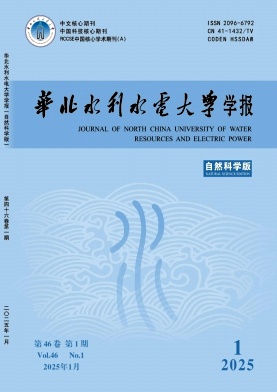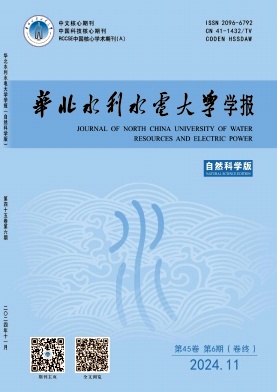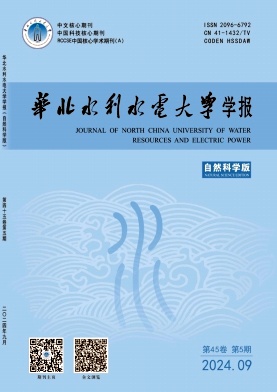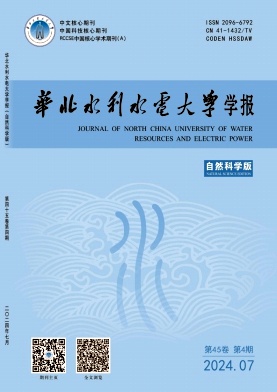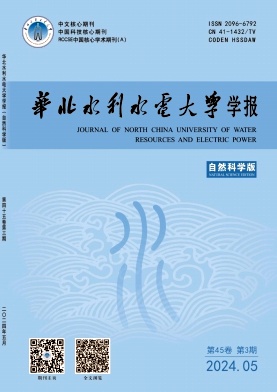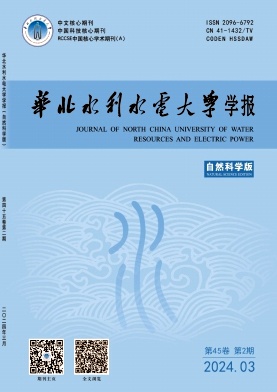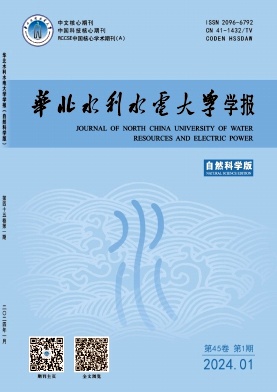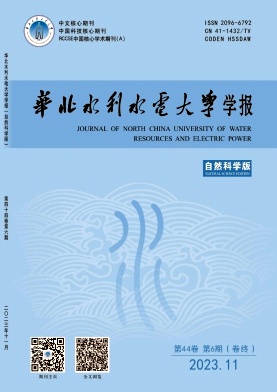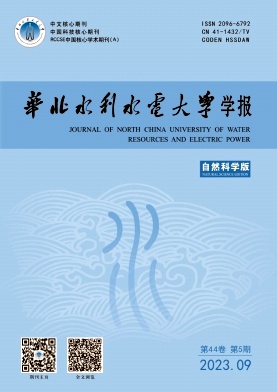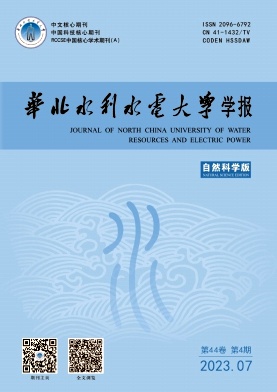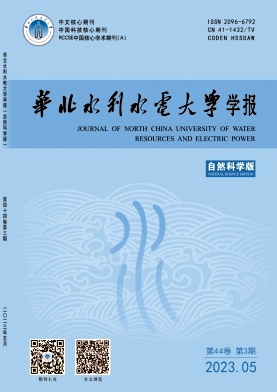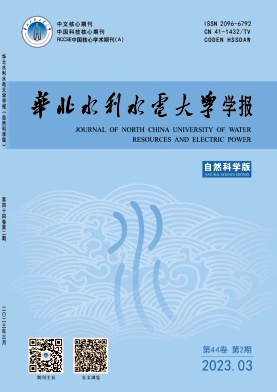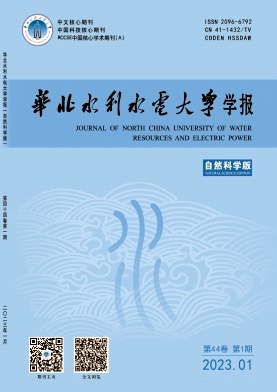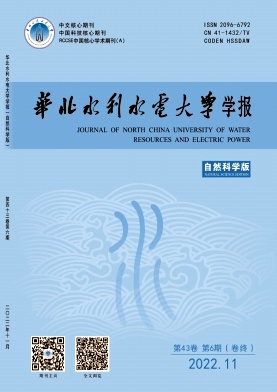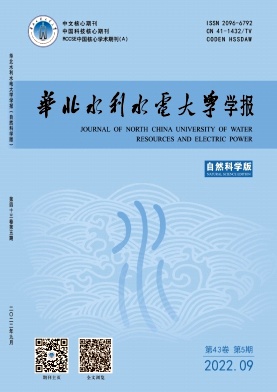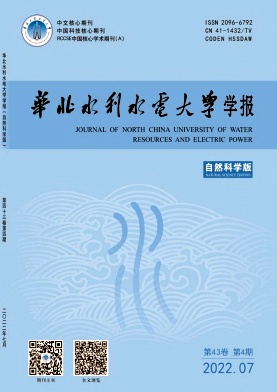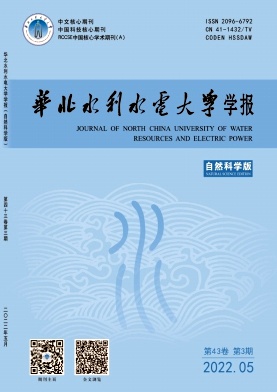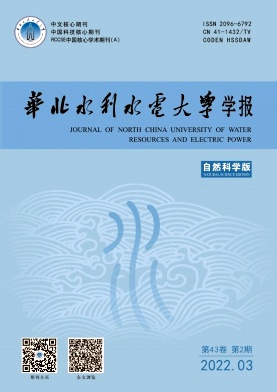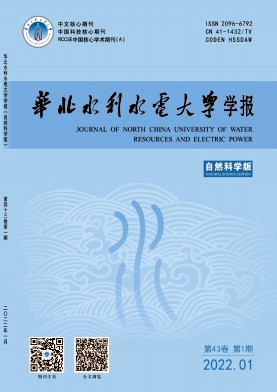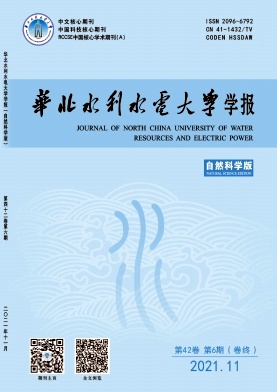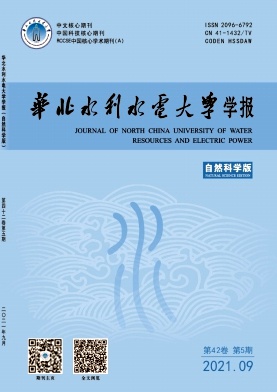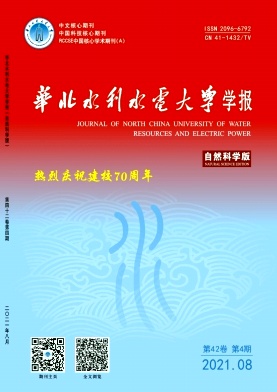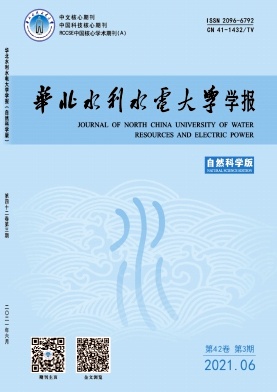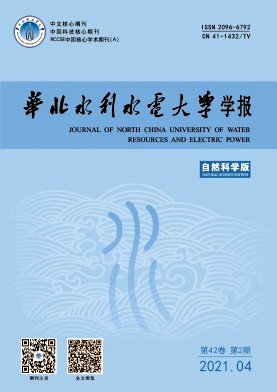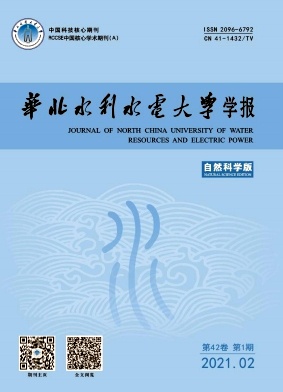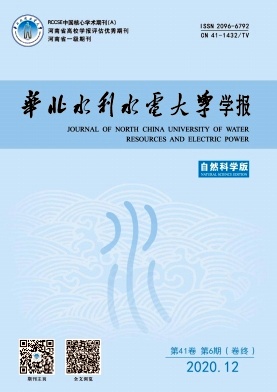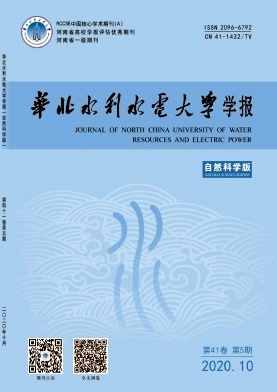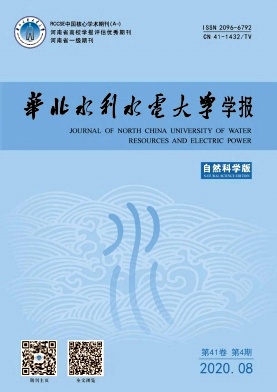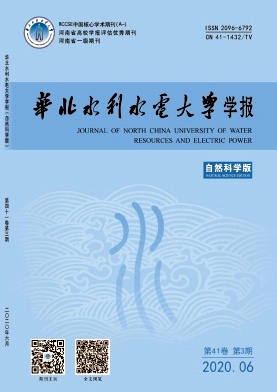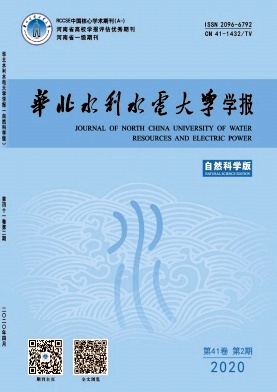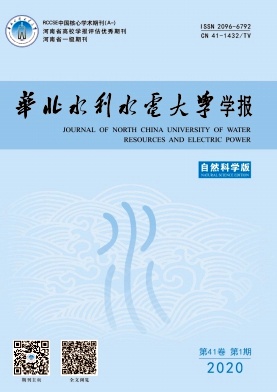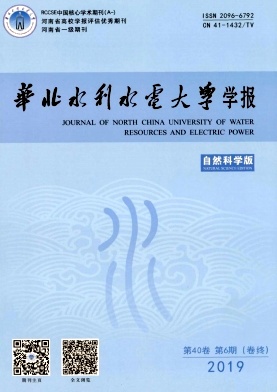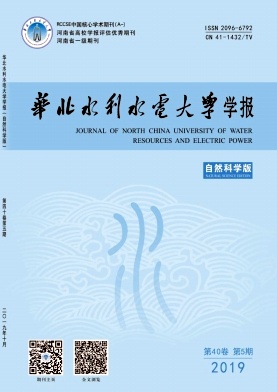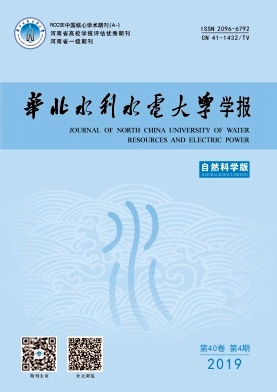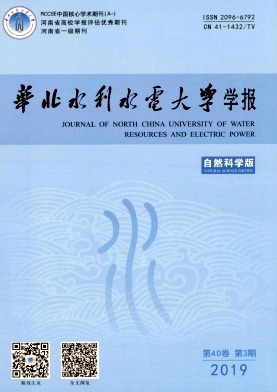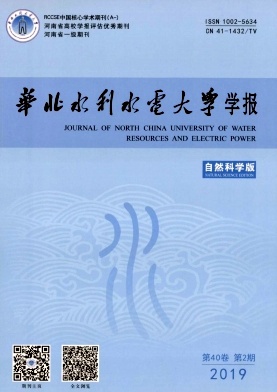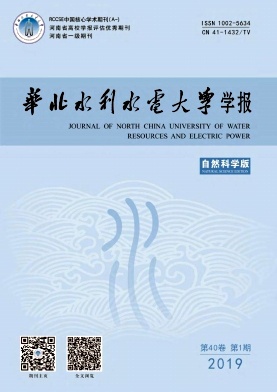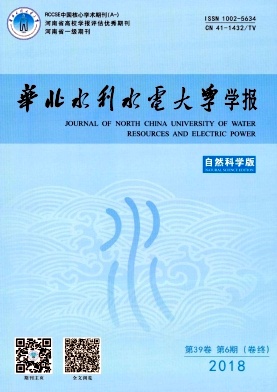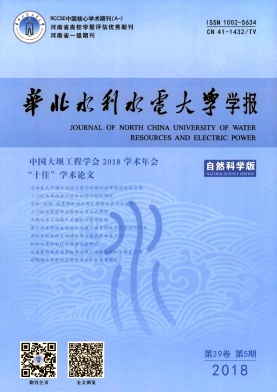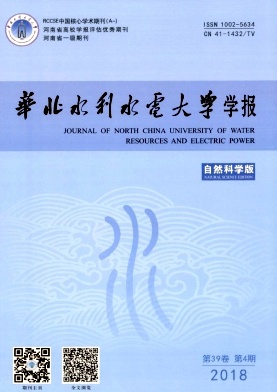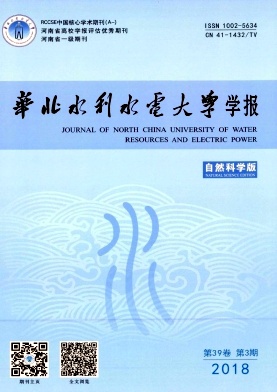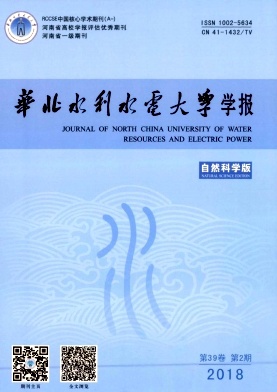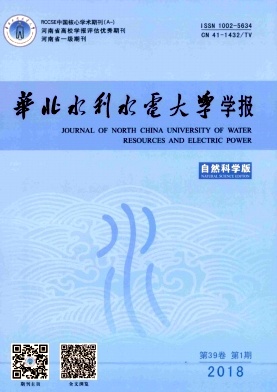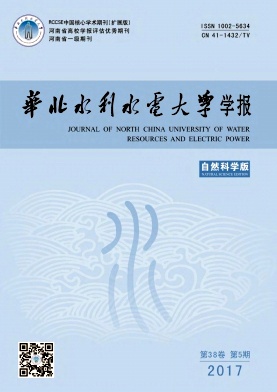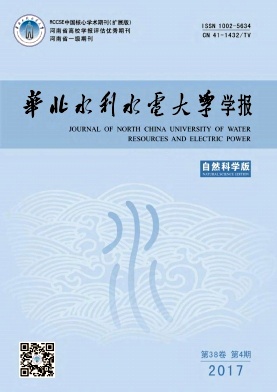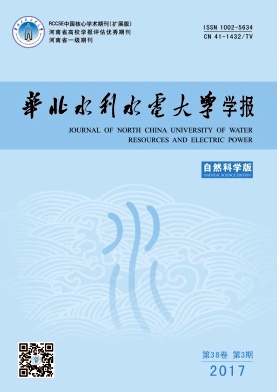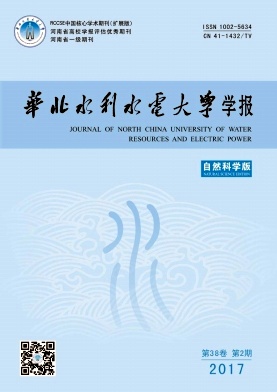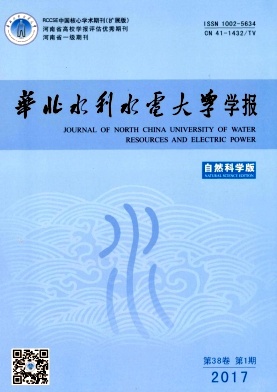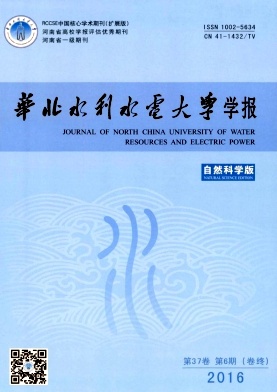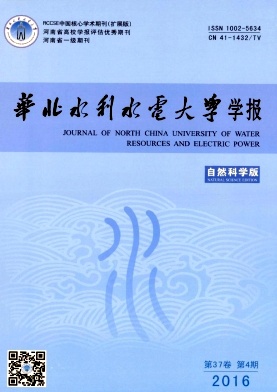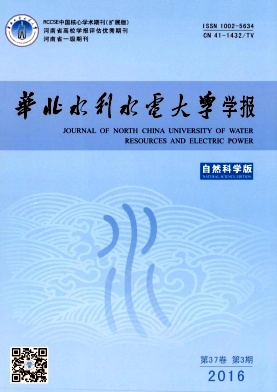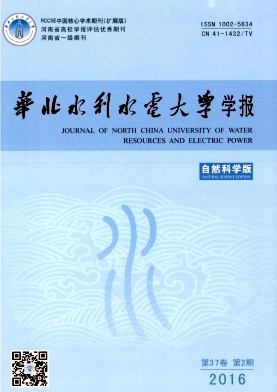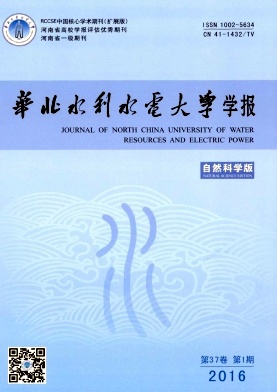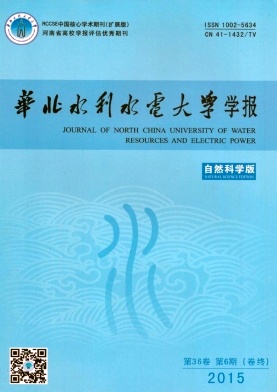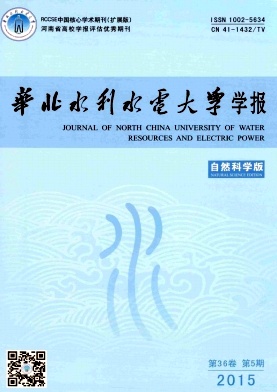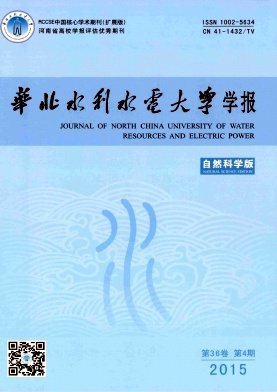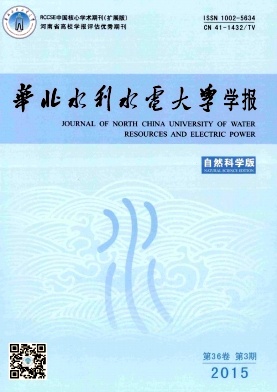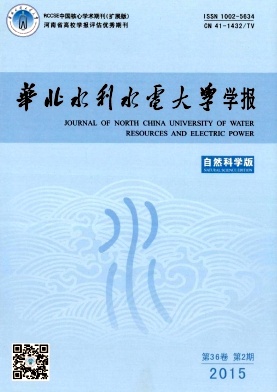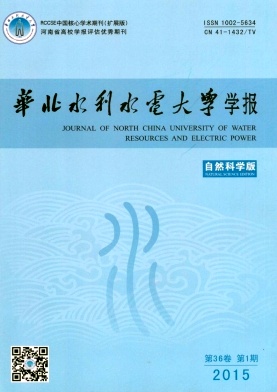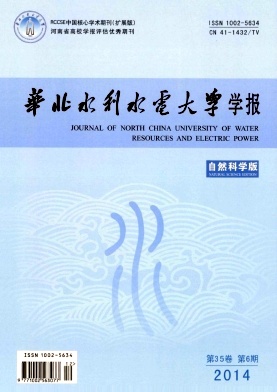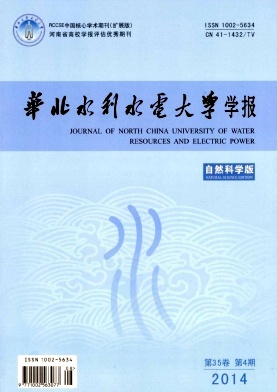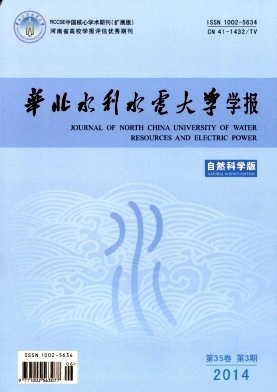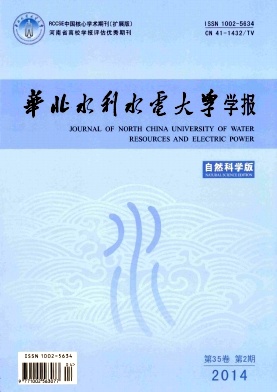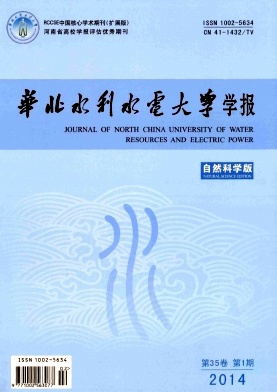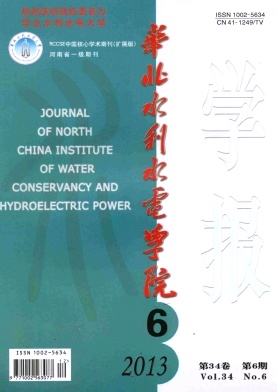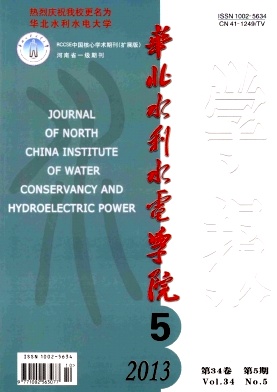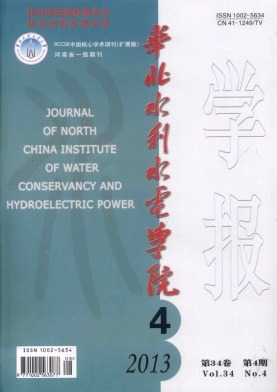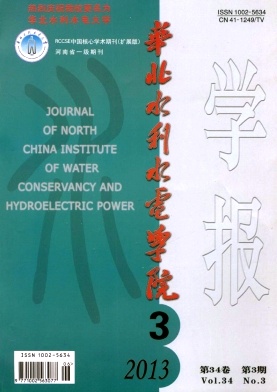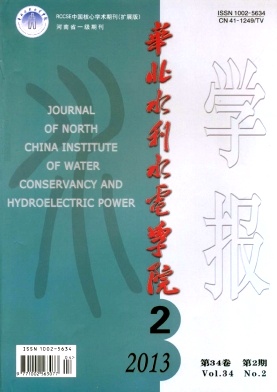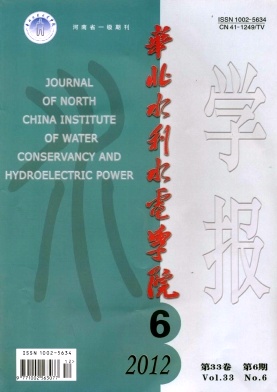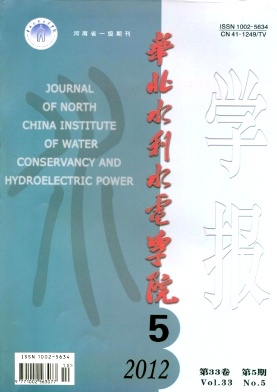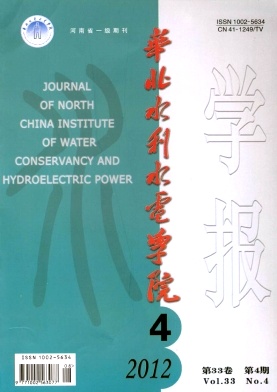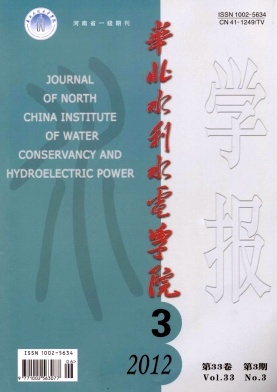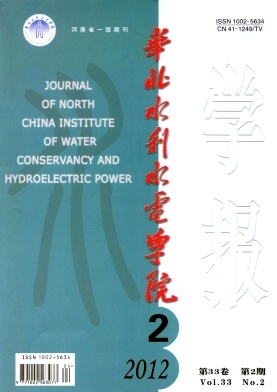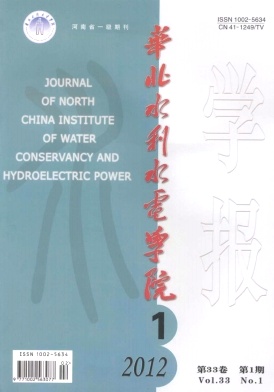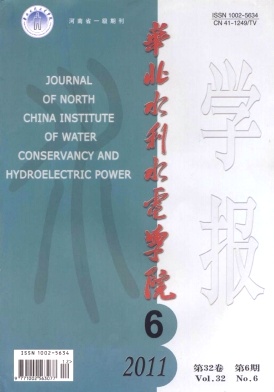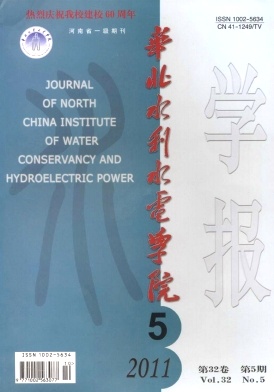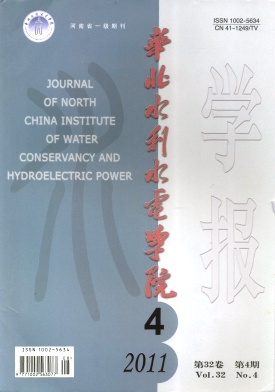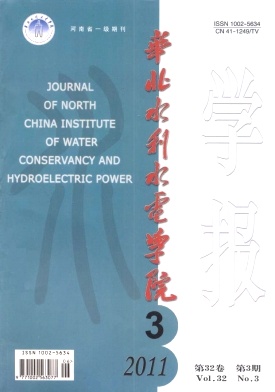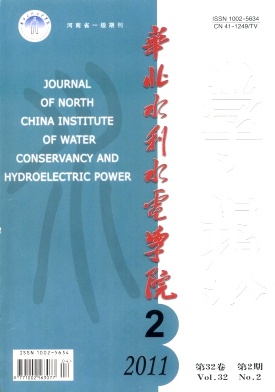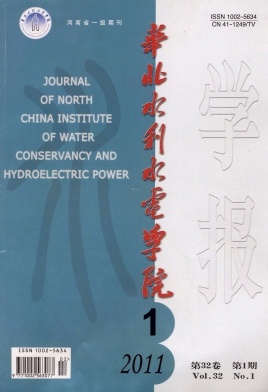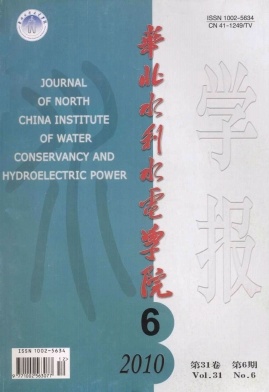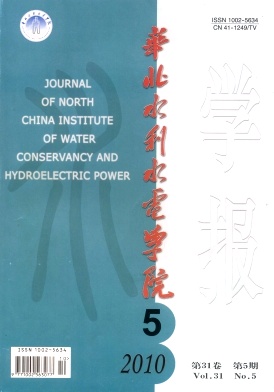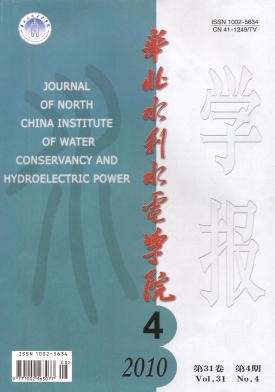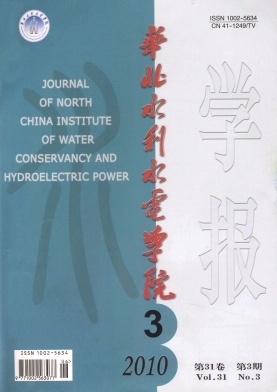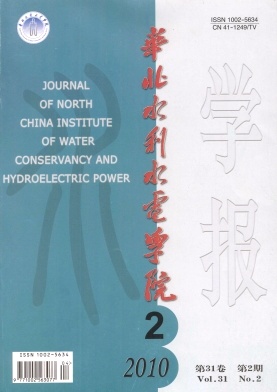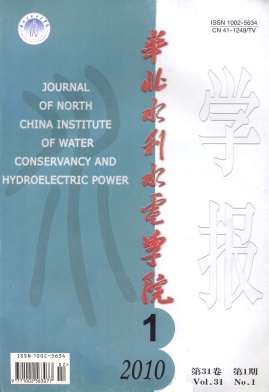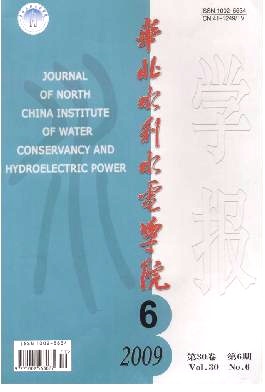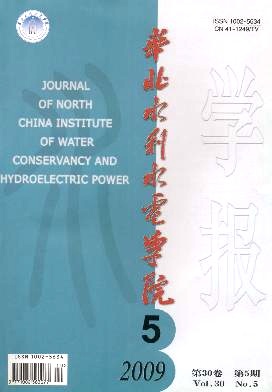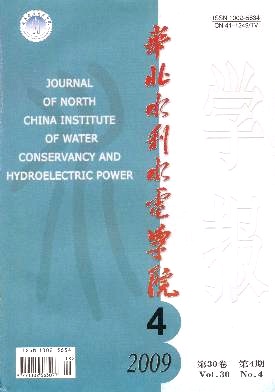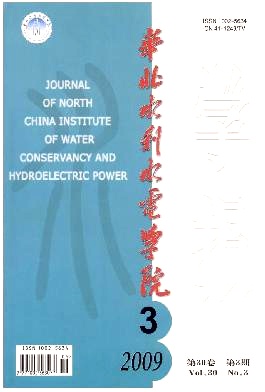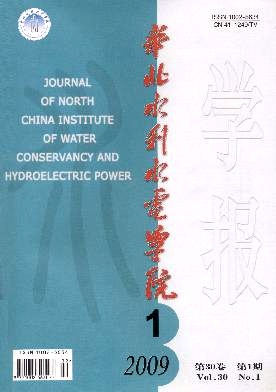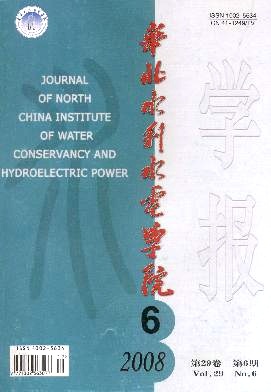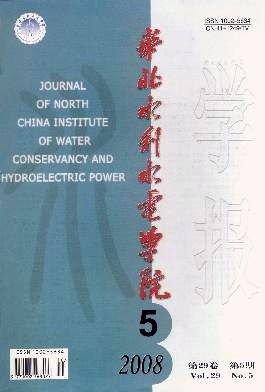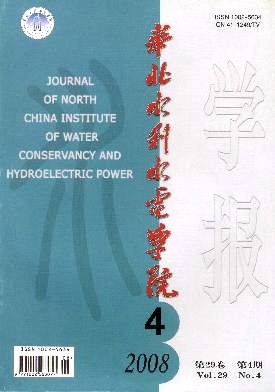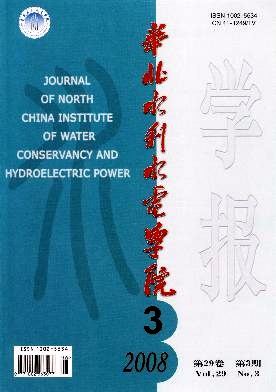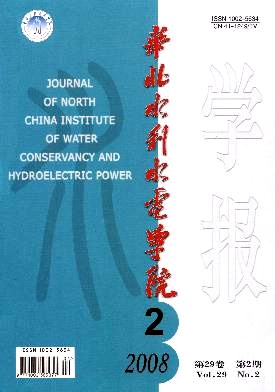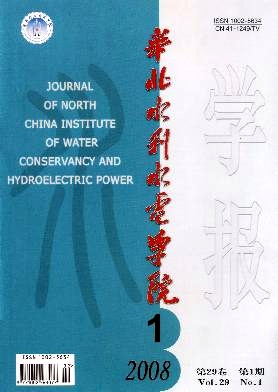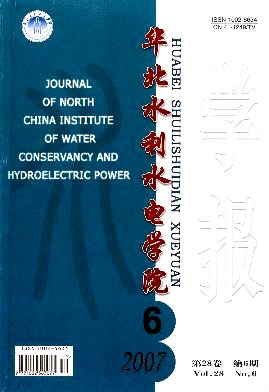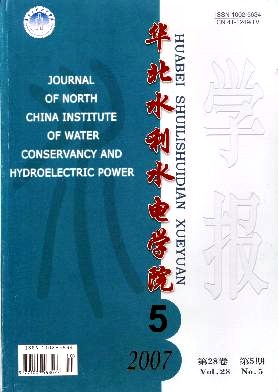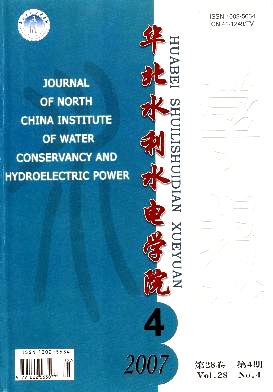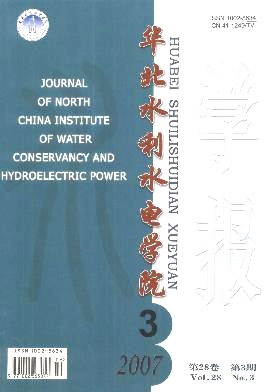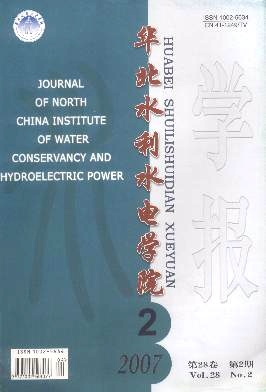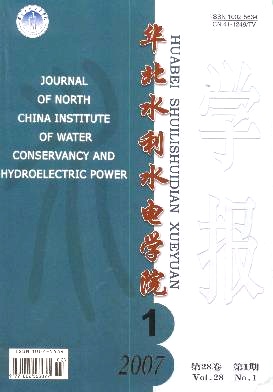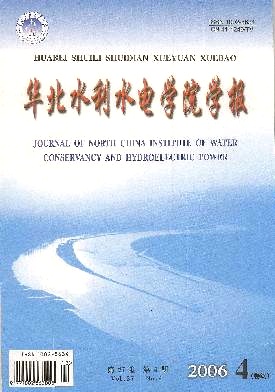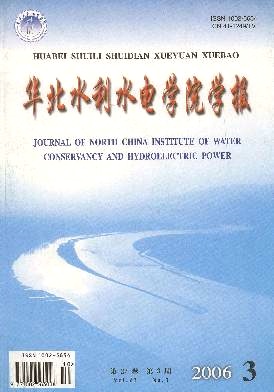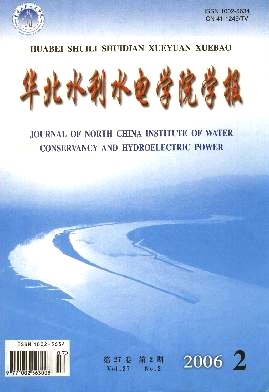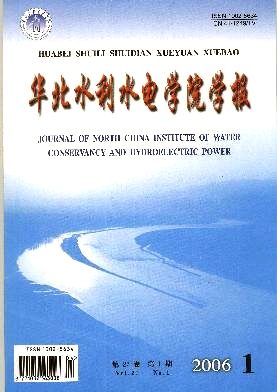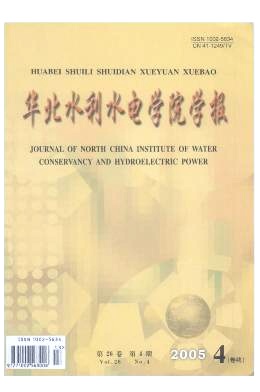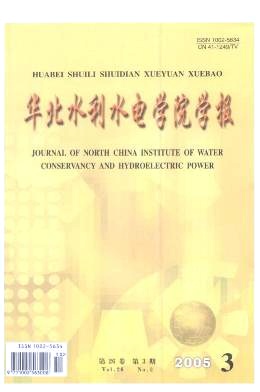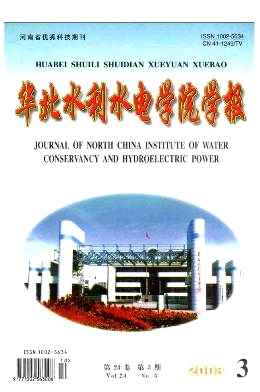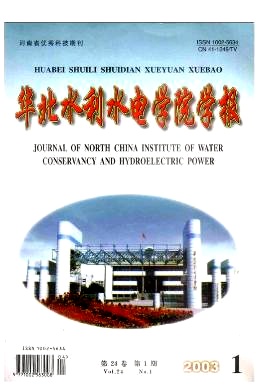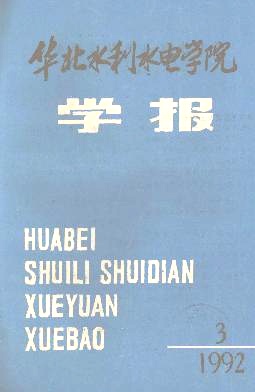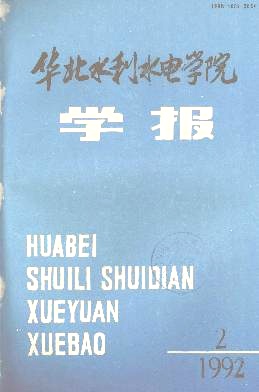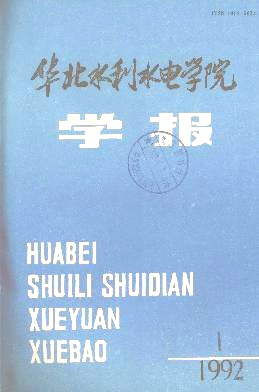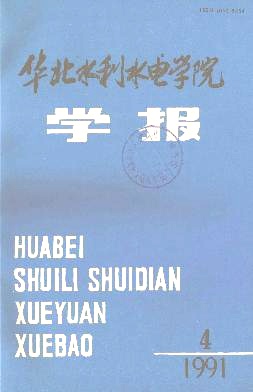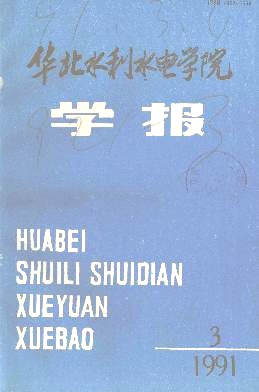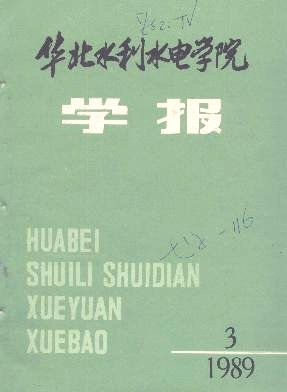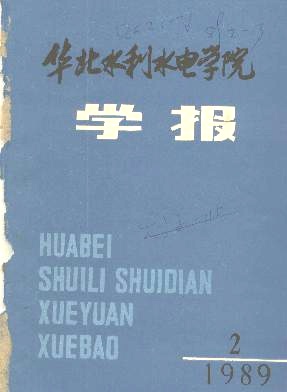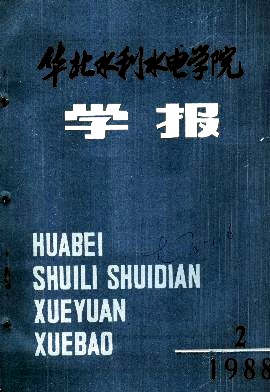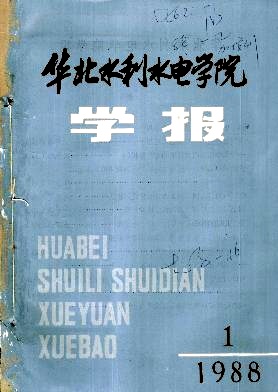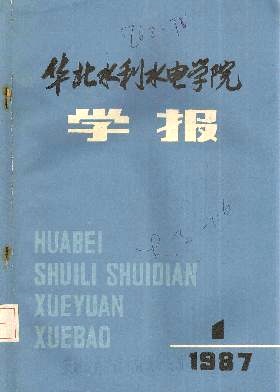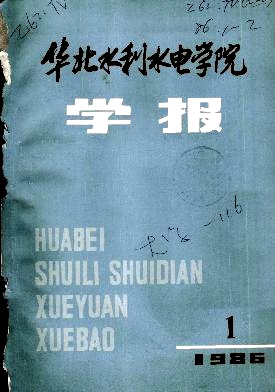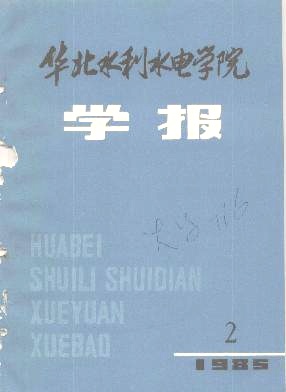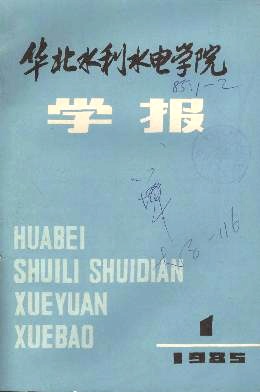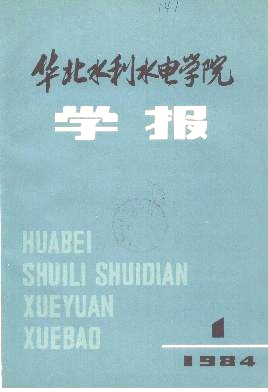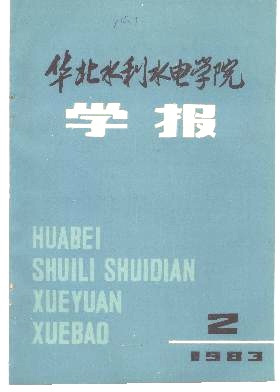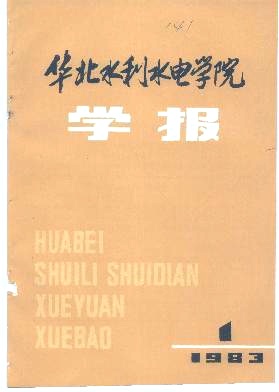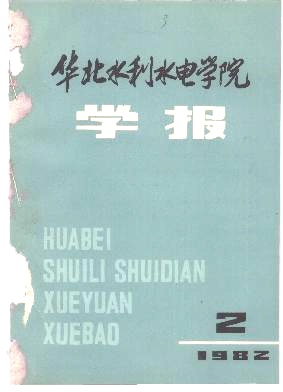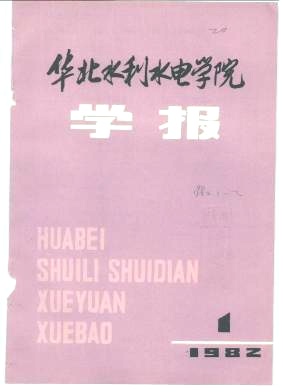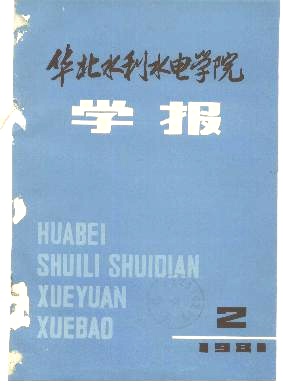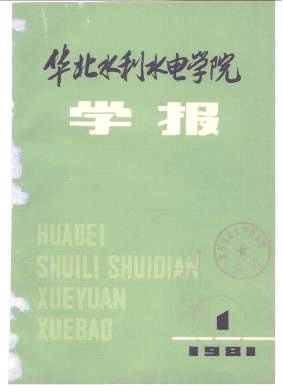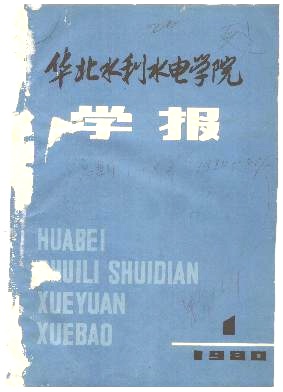Online First
Analysis of Collaborative Optimization Operation Characteristics of Pumped Storage and Electrochemical Energy Storage Based on Anti-Regulation
Identification of Priority Active Pharmaceutical Ingredients Based on Groundwater Contamination Risk
Shaking Table Test Study on Sand Liquefaction Characteristics in Xixiayuan Irrigation Project
Numerical Model for Artificial Freezing Wall Development Considering Series and Parallel of Freezing Pipes
The Temporal-spatial Pattern and Influencing Factors of Water-energy-carbon System Efficiency in Resource-based Cities of the Yellow River Basin
more..new
Ecological Evaluation and Landscape Pattern Analysis of Yellow River Delta Wetlands
Research on Interactive Stress and Coupling Coordination between Urban-Rural Integration and Eco-Environment of Urban Agglomerations in Yellow River Basin
Research on Spatiotemporal Patterns and Influencing Factors of Agricultural Water Use Efficiency in Yellow River Basin
Spatiotemporal Matching Characteristics and Prediction Analysis of Water-Land Resources in Cities along Yellow River in Henan Province
Sensitivity Analysis of Water Conservation Amount to Land Use Changes in Yellow River Water Source Conservation Area
more..Multi-platform InSAR Three-Dimensional Deformation Monitoring of Henan Changge Section of South-to-North Water Diversion Project
LIU Hui;LI Shihuan;MIAO Changwei;ZHOU Bochen;ZHANG Yu;LI Shixuan;【Objective】 To ensure the safe operation of the Middle Route of South-to-North Water Diversion Project, it is necessary to monitor channel surface deformation. 【Methods】 Based on 74 Sentinel-1A images from December 2019 to December 2020, SBAS-InSAR technology was applied to conduct a comprehensive survey of deformation in Henan section of South-to-North Water Diversion Project. Additionally, 15 ascending and 15 descending TerraSAR-X images were integrated using DS-InSAR technology for precise multi-platform InSAR detection of three-dimensional deformation in Henan Changge section. 【Results】 Twenty-two significant deformation zones were identified along Henan section, with a maximum deformation rate of-98 mm/year. Notably, a 1.6 km channel segment in Changge exhibited excessive settlement. Settlement funnels were observed in the channel near Shuimohe Village and Kuncheng Coal Mine in Yuzhou, with peak deformation rates reaching-26 mm/year and-40 mm/year, respectively. The former showed only vertical deformation, while the latter displayed both vertical and east-west bidirectional deformation. 【Conclusion】 Verification against second-order leveling data confirms that vertical deformation of the channel near Shuimohe Village aligns closely with leveling trends, with a maximum error of ±2 mm, indicating reliable accuracy. This provides theoretical and technical support for the application of InSAR three-dimensional deformation monitoring in disaster early warning and prevention in hydraulic engineering.
InSAR Deformation Monitoring and Stability Analysis of Permafrost in Tuotuo River Basin, in the Upper Yellow River
LIU Hui;ZHU Mengyuan;MIAO Changwei;LIU Wenkai;CAO Bin;WANG Junqing;【Objective】 The alternating process of water-ice phase transition in permafrost damages hydrological environments and surface engineering, leading to hazards such as roadbed collapse, landslides, floods, and glacial lake outbursts. Intelligent perception of potential risks is crucial for protecting infrastructure in permafrost regions. 【Methods】 Using 194 Sentinel-1A images(January 2017-April 2023), SBAS-InSAR technology was applied to obtain deformation results in the permafrost area of Tuotuo River Basin in the upper Yellow River. GNSS monitoring data from the past seven years validated the reliability of InSAR results. Precipitation and temperature data were incorporated to analyze impacts of environmental factors and human activities on deformation. 【Results】 Permafrost surface deformation was significant and spatially heterogeneous, with a maximum deformation rate of 13 mm/year during the monitoring period. Qinghai-Tibet Railway roadbed exhibited seasonal "frost heave and thaw settlement" patterns: uniform subsidence during warm seasons and slow uplift during cold seasons. Under climate warming, warm seasons gradually lengthen relative to cold seasons. InSAR and GNSS results showed consistent trends, RMSE and R2 were 4.33 mm and 0.9, respectively. After incorporating precipitation and temperature factors, deformation displayed significant clustering characteristics, with pronounced deformation in areas of intensive human activity. 【Conclusion】 This study provides critical insights for permafrost disaster prevention and mitigation, protection of people′s lives and property, and infrastructure safety, offering references for engineering construction in high-latitude permafrost regions.
Research Progress of Groundwater Depth and Storage Volume Monitoring and Assessment Based on Remote Sensing
MENG Junzhen;YANG Xiaoquan;LI Zhiping;Henan Vocational College of Water Conservancy and Environment;【Objective】 Monitoring the distribution, depth, and storage volume of groundwater is essential for achieving the sustainable utilization of water resources. However, due to the complex surface environment and geological conditions, how to use remote sensing technology to more accurately quantify groundwater resources remains a technical challenge. 【Methods】 This study provides a detailed analysis, from the perspective of comprehensive evaluation methods, of the applications and advancements of hydrogeological remote sensing analysis, geoscience-element remote sensing information analysis, thermal infrared remote sensing evaluation of surface thermal anomalies, quantitative inversion modeling of remote sensing information, GRACE satellite gravity data measurements, and surface deformation measurements in the study of groundwater distribution, depth, and storage volume. 【Results】 Firstly, the application of remote sensing technology in monitoring groundwater distribution, depth, and storage volum has become an effective auxiliary means to the traditional measurement method, providing a more efficient and comprehensive way to obtain groundwater information. Secondly, integrating multiple remote sensing evaluation factors and combining with ground exploration data to establish a groundwater evaluation model not only fully utilizes the wide coverage and efficiency of remote sensing technology, but also retains the accuracy and reliability of traditional exploration methods. It is currently the preferred choice for evaluating groundwater resources in special geographical environments. Thirdly, the assimilation of multi-source remote sensing data is a trend in the application of remote sensing technology in groundwater resource assessment. Future technological breakthroughs in remote sensing satellite technology and integrated data processing will greatly improve the monitoring and management capabilities of groundwater resources, providing more comprehensive and reliable information support for integrated water resource management. 【Conclusion】 Accurate remote sensing assessment models of groundwater distribution, depth, and storage volume in complex terrains require integrating multi-source remote sensing with ground exploration data, using data assimilation to overcome inherent satellite hardware limitations and achieve more precise groundwater assessment results.
Intelligent Operation and Maintenance for Pumped Storage Power Stations Based on Large Language Model
HU Hao;XU Zhaoyi;CUI Zhengyan;ZHANG Xingkui;ZHANG Haoyu;【Objective】 To address the complexities of operation and maintenance(O&M) work at pumped storage power stations, the high demand for specialized knowledge, the inefficiency of traditional knowledge retrieval, and the difficulty of general large language models(LLMs) in accurately understanding the unique terminology and complex operating conditions specific to pumped storage O&M, this study aims to enhance the professional competence and O&M efficiency of personnel, improve knowledge reuse efficiency, and meet the national strategic requirements for developing new quality productivity in water conservancy and electric power systems by constructing an intelligent O&M assistance system tailored for pumped storage power stations. 【Methods】 The Pumped Storage-Artificial Intelligence Operation and Maintenance(PS-AIOM) system was constructed based on large language models. Utilizing a locally deployed LLM as the foundation, the system integrated retrieval-augmented generation(RAG) and prompt engineering techniques. Through external knowledge base retrieval, it enhanced the accuracy of LLM applications in pumped storage O&M. To ensure response accuracy for O&M tasks, a dedicated O&M knowledge base was constructed. To validate system effectiveness, a test dataset was created. 【Results】(1) An evaluation method combining keyword matching and semantic similarity was adopted to score PS-AIOM′s responses, considering both the specific matching of content and overall textual similarity for a comprehensive assessment.(2) PS-AIOM achieved a satisfaction rate of 83% for O&M queries, with a comprehensive average score of 0.8138, demonstrating its effectiveness in assisting O&M personnel.(3) PS-AIOM significantly outperformed advanced general LLMs(Model Z: 4% satisfaction rate, 0.3982 average score; Model T:17% satisfaction rate, 0.4775 average score). 【Conclusion】 By integrating a locally deployed LLM base, RAG technology, and a domain-specific knowledge base, the PS-AIOM system effectively overcomes the limitations of general LLMs regarding professional domain knowledge scarcity. It achieves relatively accurate knowledge application within the O&M domain of pumped storage power stations.
Analysis of Impact of Large Water Level Variations on Working Performance of Pumped Storage Power Station Dams
ZHOU Shuntian;LIN Xingcheng;LU Yuxin;WANG Zhenhong;WANG Juan;ZHANG Kaiheng;HOU Wenqian;【Objective】 The water level of the reservoir dam in a pumped storage power station undergoes cyclic fluctuations of release and storage. Large water level variations cause continuous changes in boundary conditions such as dam temperature and stress, directly affecting the dam′s working performance. To ensure the safe operation of the dam, this study investigates the impact of large water level variations on the dam′s working performance in pumped storage power stations. 【Methods】 Taking the lower reservoir dam of the Zhouning Pumped Storage Power Station in Fujian Province as the research object, monitoring data during the initial stage of impoundment were analyzed. Using a three-dimensional finite element method, the variation patterns of the temperature field, deformation field, and stress field of the dam under large water level variations were investigated. 【Results】(1) Reservoir water temperature showed a significant correlation with the multi-year average air temperature.(2) At the same elevation, the internal temperature of the concrete dam body was higher than at the sides, and after impoundment, the surface temperature of the concrete below the water level was essentially consistent with the reservoir water temperature.(3) During the initial stage of impoundment, under large water level variations, the deformation and stress changes of the dam were relatively small, with the maximum deformation ranging from 0.15 to 0.17 mm/m. 【Conclusion】 The results provide technical support for the safe operation of the dam and have reference value for the construction and safe operation of similar pumped storage power station dams.
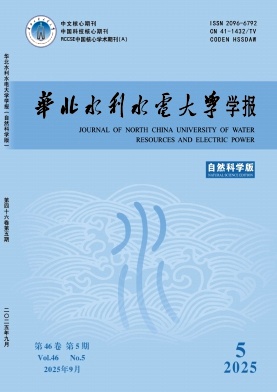
Tracking the information about your manuscript
Communicate with the editorial office
Query manuscript payment status Reviewer LoginCollecting, editing, reviewing and other affairs offices
Managing manuscripts
Managing author information and external review Expert Information Author LoginOnline Review
Online Communication with the Editorial Department
Journal News
This Journal is Continuously Indexed by the "RCCSE Chinese Core Academic Journal (A)"
2025-07-03The Editorial Department Co-organized the "17th Forum on Water Science Development".
2025-07-03The Editorial Board Meeting for the Year 2024 was held in Tianjin
2025-07-03Call for Papers "Ecological Hydrology and Soil and Water Conservation in the Yellow River Basin"
2025-07-03Notice on the Convening of the Editorial Board Meeting (April 19th)
more..